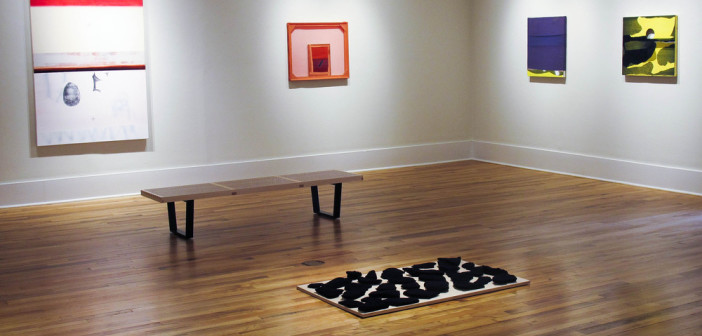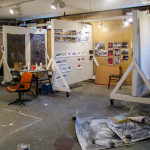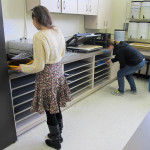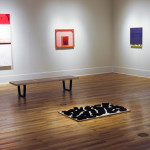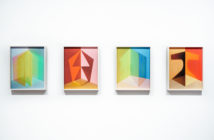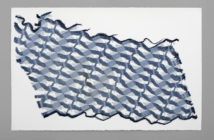Providence College has shown a surprising commitment to the visual arts, giving them a central place in its overarching educational philosophy. The College, a small Catholic liberal arts school operated by the Dominican Order, recently completed a series of capital upgrades to its Department of Art and Art History which resulted in added studio and classroom spaces, upgraded lab facilities, and a refurbished art gallery, among other improvements.
The school, at roughly 4,000 undergraduates, offers 49 majors. Students majoring in studio art or art history represent a tiny portion of the whole, leading inevitably to questions about why the recent investments in arts spaces are necessary. For PC, the arts represent one aspect of the comprehensive liberal arts education the College seeks to provide its students. By investing in the arts, the College is able to draw on the skills of its studio and art history faculty to inform other disciplines and enhance pedagogical practices.
One area benefitting from the school’s robust art program is the Department of Western Civilization. A unique two-year course required for all freshman and sophomores, Western Civilization is a team taught program focused on history, literature, philosophy, and theology. Studio artists and art historians are called on frequently to guest lecture in the course, relating important works from the canon of art history to any and all of the four subjects covered in the class. These lectures convey the value of art as a contextualizing agent for historical ideas and situations. The use of artwork as a line of historical inquiry enables students to broaden their understanding of subjects in unexpected ways. The interdisciplinary appeal of the arts has also lead to two recent exhibits that focused on relationships between art and sport as well as art and science.
Though it is utilized in varying ways as a teaching tool, and all students are required to take a fine arts class as part of the College’s Core Curriculum, the institutional interest in art runs deeper than mere programmatic or academic necessity. It is deeply related to the College’s identity as a Catholic institution managed by the Dominican Friars. The opening line of a history written on the art program describes religious motivations for visual arts education.
"Artistic expression has always been integral to the life of the Dominican Order. One has only to recall the frescoes of Fra Angelico and Fra Bartolomeo's drawings; both men were Dominicans who were also artists. It is natural, therefore, that Providence College, a Dominican institution, offer a major in the fine arts."
This interest on behalf of the institution has materialized in recent years in a series of capital upgrades that have improved facilities used by the art program. Most noticeably, a new "art walk" was installed in the summer of 2013 as part of a campus initiative to create an "arts district." Sponsored in part by a grant from the Champlin Foundations, the pleasant brick walk replaced a decaying roadway that once separated two buildings housing studio art and art history classrooms. The new exterior space functions as one of a network of outdoor classrooms on the campus, and includes a scale replica of the medieval labyrinth at Chartres Cathedral.
Also over the summer 2013, a space formerly used to house the school’s art collection was transformed into a proper classroom for art history courses. The collection was given a new, larger, climate controlled space in a separate building, save for one immovable piece: a stained glass window depicting the Sacrifice of Isaac, salvaged from a disused church and incorporated into the building years ago. The room appropriately hosts a popular course on sacred space. Another new art history classroom was added when a vacant former chapel space was converted into a hundred seat classroom with the campus’s largest projection screen. The space is dedicated for use by art history survey classes and will also host screenings for courses on film.
The College has similarly invested in assets for studio artists. A basement space in the building that houses classrooms for drawing and painting has been remodeled to house senior studios, giving students much needed space to create works for their senior theses. Every graduating senior has the opportunity to host a solo show of his or her work before graduation. Other studio upgrades over the past few years have included a new digital photography lab, renovated facilities for traditional photography, and the addition of 3D printing equipment.
Support spaces have also been renewed. The Art Department recently added four iMac desktops to its Visual Resource Center, a workspace for student researchers who assist faculty art historians. The addition enhances the "behind-the-scenes" work of the faculty and gives students more opportunities to learn skills that are important within the field, and valuable in other professions as well. One of the campus’s two art galleries was also completely renovated with new lighting and the addition of salvaged hardwood floors greatly enhancing the space, which plays host to visiting artists, student shows, and speaking events.
These facility improvements are telling and convey an important message, namely that an education in the arts is integral to a broader education. The recent capital developments at Providence College are an indicator that at least for this institution, fine arts education remains a relevant, vital, and important aspect of a liberal arts education. The skepticism voiced in President Obama’s off the cuff remarks is a reality for many who wonder if there is value in arts education.
Investments made on the part of schools like PC are important for their ability to reframe the discussion to showcase the enormous value studio art and art history have to education. By investing in the arts, the College tells educators in high schools that it values prospective students who can think creatively and incorporate the skills that come with arts education into a liberal arts baccalaureate program. The study of art history does have value, and continued investment at the collegiate level will make it possible for more students to gain from exposure to the field, and take the myriad skills therein into the job market.

